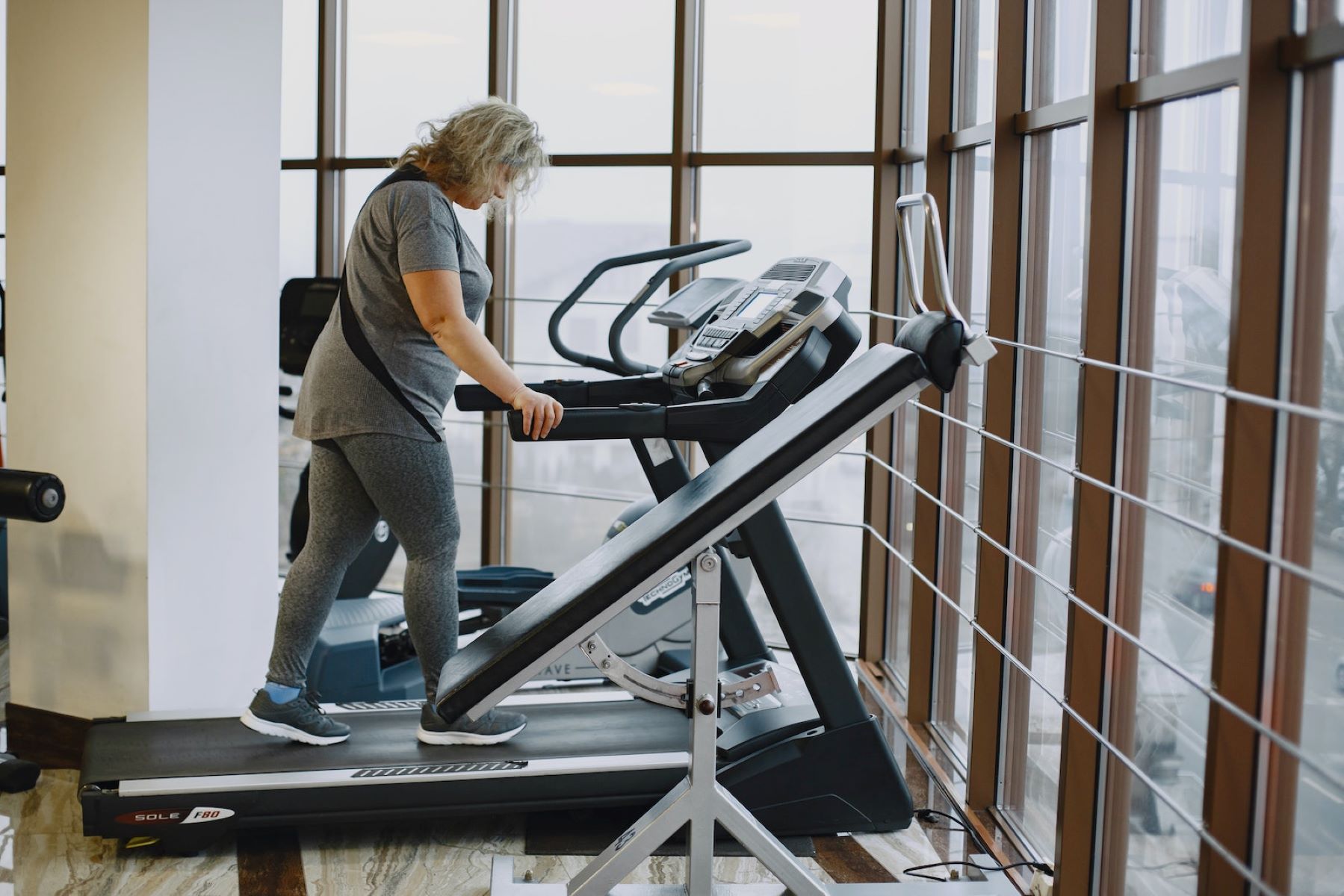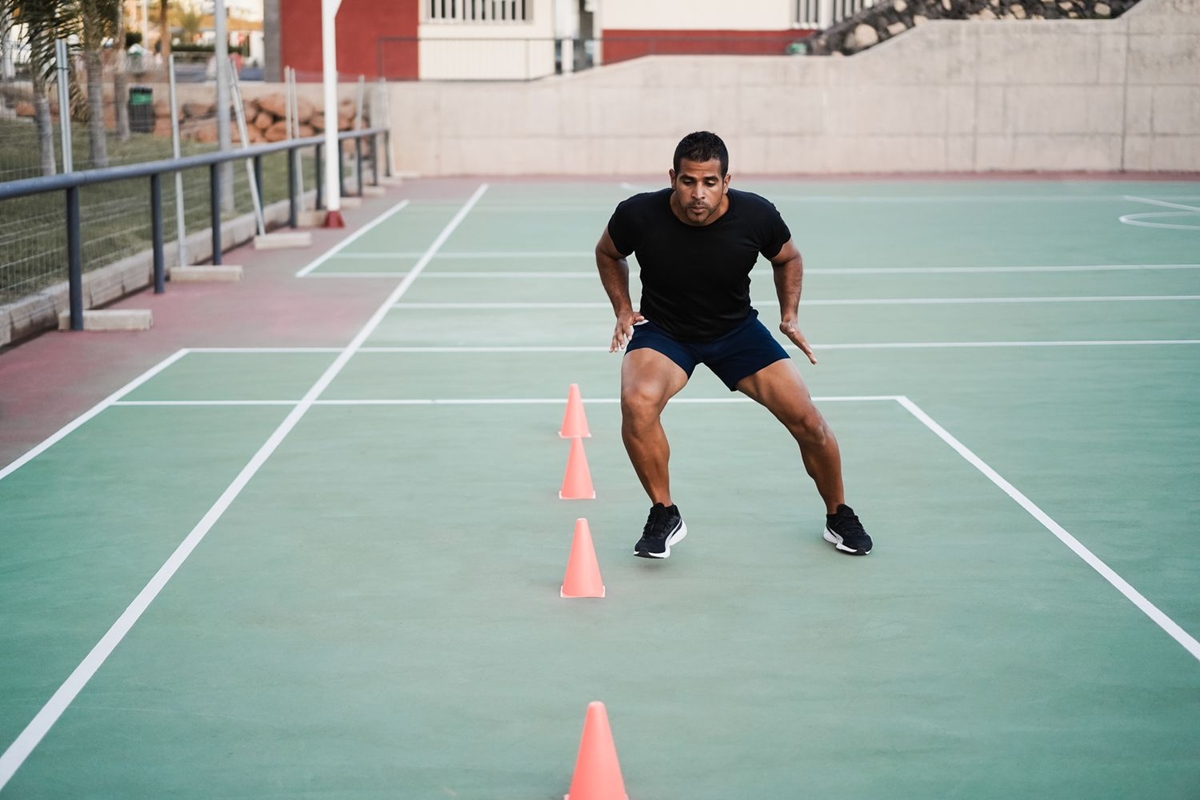Home>Misc>Featured>How Many Calories Can I Burn Jogging For 30 Minutes


Featured
How Many Calories Can I Burn Jogging For 30 Minutes
Modified: January 22, 2024
Burn calories and stay fit with this featured jogging routine! Find out how many calories you can burn in just 30 minutes of jogging.
Introduction
Jogging is a popular form of exercise that offers numerous benefits for both physical and mental well-being. Whether you’re a beginner or a seasoned runner, incorporating jogging into your fitness routine can help you stay active, burn calories, and improve cardiovascular health.
Beyond its physical benefits, jogging also provides a chance to reconnect with nature, clear your mind, and reduce stress. If you’re curious about how many calories you can burn while jogging for 30 minutes, this article will provide you with insights on the factors that affect calorie burn and tips to maximize your workout’s effectiveness.
Before we dive into the specifics, it’s important to note that the number of calories burned during a jog can vary from person to person. Factors such as age, weight, fitness level, and running technique can significantly influence the caloric expenditure.
However, by understanding the average calories burned during a jogging session and implementing certain techniques, you can optimize your workout routine and achieve your desired fitness goals.
So, let’s explore the benefits of jogging and discover how to maximize your calorie burn while enjoying this invigorating exercise.
Benefits of Jogging
Jogging offers a wide range of benefits that go beyond calorie burning. Here are some of the key advantages of incorporating jogging into your regular fitness routine:
- Improved cardiovascular health: Regular jogging helps strengthen your heart and improve circulation, lowering the risk of heart diseases and high blood pressure.
- Weight management: Jogging is an effective way to burn calories and maintain a healthy weight. It can help you shed excess pounds and prevent weight gain.
- Stress relief: Engaging in moderate-intensity aerobic exercise, such as jogging, can stimulate the release of endorphins, which are known as “feel-good” hormones. This can reduce stress, anxiety, and depression.
- Increased bone density: Jogging is a weight-bearing exercise that can help enhance bone mineral density, reducing the risk of osteoporosis and fractures.
- Improved mental clarity: Regular jogging can boost cognitive function, memory, and focus. It provides a mental break from daily stressors and improves overall mental well-being.
- Boosted immune system: Engaging in regular aerobic exercise like jogging can elevate the production of antibodies and white blood cells, enhancing your immune system’s strength.
- Enhanced endurance and stamina: Jogging builds endurance and stamina by strengthening the muscles involved in cardiovascular activity. This can improve performance in other physical activities.
- Increased self-confidence: Achieving jogging milestones and improving your overall fitness level can boost self-esteem and confidence.
- Improved sleep quality: Regular jogging can promote better sleep patterns, helping you fall asleep faster and enjoy more restful sleep.
With all these benefits in mind, it’s evident that jogging is a fantastic way to improve both physical and mental health. Now, let’s explore the factors that can influence the number of calories burned during a jogging session.
Factors Affecting Calories Burned
While jogging for 30 minutes can be an effective way to burn calories, the actual number of calories burned can vary depending on several factors. Understanding these factors can help you estimate your caloric expenditure more accurately and tailor your jogging routine to optimize calorie burn. Here are the key factors that affect the number of calories burned during a jogging session:
- Body weight: Generally, the more you weigh, the more calories you burn while jogging. This is because it requires more energy to move a heavier body mass.
- Gender: On average, men tend to burn more calories than women during jogging due to their higher muscle mass.
- Age: Metabolism tends to slow down with age, which can slightly lower the number of calories burned while jogging.
- Fitness level: Individuals with a higher fitness level tend to burn fewer calories during a jogging session because their bodies have become more efficient at performing the exercise.
- Jogging pace: The speed at which you jog plays a significant role in calorie burn. Running at a faster pace requires more effort and thus burns more calories.
- Jogging duration: The longer you jog, the more calories you will burn. However, it’s important to find a balance that suits your fitness level and avoids overexertion.
- Running surface: Jogging on uneven terrains or inclines requires more effort, which can increase calorie burn compared to jogging on flat surfaces.
- Temperature and weather conditions: Running in hot or cold weather can slightly increase the calories burned due to the body’s effort to maintain a stable core temperature.
- Running technique: Proper running form and technique can help you engage the correct muscles and maximize calorie burn.
Keep in mind that these factors are not mutually exclusive, and their combined influence determines the number of calories burned during a jogging session. By considering these factors and making appropriate adjustments, you can optimize your calorie burn and make the most out of your jogging routine. Now, let’s explore the average calories burned during a 30-minute jogging session.
Average Calories Burned While Jogging
Calculating the exact number of calories burned while jogging can be challenging due to the individual variations in factors such as body weight, fitness level, and running technique. However, there are average estimates that can provide a general idea of the caloric expenditure during a 30-minute jogging session.
On average, a person who weighs around 150 pounds can expect to burn approximately 240 to 290 calories while jogging at a moderate pace for 30 minutes. This estimate may vary depending on factors such as intensity level, running form, and terrain.
If you weigh more than 150 pounds, you can expect to burn slightly more calories, while those who weigh less may burn slightly fewer calories. It’s important to note that these estimates are just averages and should be used as a starting point for understanding the caloric expenditure during jogging.
To get a more accurate estimation of the calories burned while jogging, you can use various fitness tracking devices or smartphone applications specifically designed for this purpose. These tools take into account your body weight, heart rate, and pace, providing a more personalized calorie burn calculation.
Remember, the number of calories burned during jogging is just one aspect of your fitness journey. It’s equally important to focus on overall health, strength, and endurance, rather than solely obsessing over calorie burn.
Now that we have a general understanding of average calorie burn during jogging, let’s explore how the intensity level and speed of your jog can impact the number of calories burned.
Intensity Levels and Calories Burned
The intensity level at which you jog plays a significant role in the number of calories burned during your workout. Increasing the intensity of your jog can help you burn more calories and improve your fitness level. Let’s explore how different intensity levels affect calorie burn:
- Low-intensity jogging: Jogging at a low intensity, where you can hold a conversation comfortably, burns fewer calories compared to higher intensity workouts. This is a good option for beginners or those looking for a less intense workout.
- Moderate-intensity jogging: Jogging at a moderate intensity, where you can still talk but with slight difficulty, is a great way to burn calories and improve cardiovascular health. This level of intensity can help you achieve the average calorie burn mentioned earlier.
- High-intensity jogging: Jogging at a high intensity, where you can only speak in short bursts, significantly increases calorie burn. This intense form of jogging, such as interval sprints or hill repeats, helps to build endurance, boost metabolism, and burn more calories in a shorter period.
Choosing the right intensity level depends on your fitness level, goals, and overall health. It’s essential to listen to your body and gradually increase the intensity as you build stamina and strength. Incorporating variations in intensity, such as interval training, can add an extra calorie-burning boost to your jogging routine.
Now, let’s explore how your jogging speed can impact the number of calories burned.
Speed and Calories Burned
The speed at which you jog has a direct impact on the number of calories burned during your workout. Generally, running at a faster pace requires more effort and therefore burns more calories. Let’s take a closer look at how your jogging speed can affect calorie burn:
- Slow-paced jogging: Jogging at a slow pace, around 4-5 miles per hour, generally burns fewer calories compared to a faster pace. This is a comfortable speed for beginners or those recovering from injury.
- Moderate-paced jogging: Jogging at a moderate pace, around 6-7 miles per hour, increases calorie burn compared to a slower pace. This pace is suitable for most individuals, providing a good balance between effort and sustainability.
- Fast-paced jogging: Jogging at a fast pace, above 8 miles per hour, significantly increases calorie burn. This is more suitable for advanced runners or those looking for a high-intensity workout.
It’s important to note that the calorie burn estimates for different speeds may vary depending on factors like body weight, fitness level, and terrain. Additionally, incorporating speed intervals or sprints into your jogging routine can further boost calorie burn and enhance cardiovascular fitness.
When determining your ideal jogging speed, consider your goals, fitness level, and personal preferences. Finding a pace that challenges you without causing excessive strain is key to optimizing calorie burn and enjoying your jogging sessions.
Now that we’ve examined the impact of speed on calorie burn, let’s explore the influence of body weight on the number of calories burned while jogging.
Body Weight and Calories Burned
Body weight plays a significant role in determining the number of calories burned while jogging. Generally, individuals with higher body weight burn more calories compared to those with lower body weight. Here’s why:
When you jog, your muscles need to work harder to move your body weight, resulting in increased energy expenditure. This means that someone who weighs more will burn more calories due to the additional effort required to move a heavier body mass.
To give you a better understanding, here’s an estimate of the calories burned while jogging for 30 minutes at a moderate pace based on different body weights:
- A person weighing around 150 pounds can expect to burn approximately 240 to 290 calories.
- A person weighing around 180 pounds can burn approximately 290 to 350 calories.
- A person weighing around 200 pounds can burn approximately 320 to 390 calories.
- A person weighing around 250 pounds can burn approximately 400 to 480 calories.
It’s important to remember that these are estimates and individual variations, such as fitness level and running technique, can influence the actual caloric expenditure.
While those with higher body weight may initially burn more calories while jogging, it’s crucial to focus on overall health and wellness rather than solely on calorie burn. Consistency, proper nutrition, and a balanced workout routine that includes strength training are essential for achieving optimal fitness regardless of body weight.
Now that we’ve explored the impact of body weight on calorie burn, let’s dive into some techniques you can use to increase calorie burn while jogging.
Techniques to Increase Calorie Burn While Jogging
If you’re looking to maximize your calorie burn during jogging sessions, there are several techniques and strategies you can incorporate into your routine. By implementing these techniques, you can enhance your overall workout intensity and increase the number of calories burned. Here are some effective techniques to try:
- Incorporate intervals: Interval training involves alternating between periods of high-intensity jogging and recovery periods of lower intensity or walking. This alternating pattern boosts calorie burn and improves cardiovascular fitness.
- Add inclines: Jogging uphill or on inclined surfaces increases the intensity of your workout, forcing your muscles, including your glutes and quadriceps, to work harder and burn more calories.
- Increase pace and distance: Gradually increase the pace and distance of your jogging sessions to challenge your body and stimulate higher calorie burn. However, always listen to your body and avoid overexertion.
- Engage in sprints: Incorporating short bursts of sprinting during your jog can elevate your heart rate and increase calorie burn. Sprint for a specific distance or time, then recover with a slower pace before repeating.
- Try cross-training: Incorporating other forms of exercise, such as cycling, swimming, or strength training, can improve overall fitness and help burn more calories by targeting different muscle groups.
- Include resistance exercises: Integrate bodyweight exercises or use resistance bands during your jogging routine to challenge your muscles and increase calorie burn. Exercises like lunges, squats, or push-ups can be done during rest intervals.
- Stay consistent: Consistency is key when it comes to burning calories. Aim to jog regularly rather than sporadically to maintain a higher metabolic rate and optimize calorie burn.
Remember, it’s important to progress gradually and prioritize proper form and technique to avoid injuries. Consult with a fitness professional if you’re unsure about incorporating any of these techniques into your jogging routine.
Now that we’ve explored techniques to increase calorie burn, let’s address some essential safety tips to consider while jogging.
Safety Tips While Jogging
While jogging is a generally safe activity, it’s important to prioritize safety to avoid injuries and ensure an enjoyable experience. Here are some essential safety tips to follow while jogging:
- Wear appropriate footwear: Invest in a pair of well-fitting running shoes that provide adequate support and cushioning to protect your feet and joints.
- Warm up and cool down: Before and after each jogging session, perform a warm-up and cooldown routine to prepare your muscles and prevent injury.
- Stay hydrated: Drink water before, during, and after your jog to stay properly hydrated, especially on hot or humid days.
- Wear reflective gear: If jogging in low-light conditions, wear reflective clothing or accessories to increase visibility and ensure that you’re easily seen by motorists.
- Choose safe routes: Select jogging routes that are well-lit, have a smooth surface, and preferably have low traffic to minimize the risk of accidents.
- Be aware of your surroundings: Stay alert and be aware of your surroundings while jogging. Avoid using headphones at high volumes that may limit your ability to hear approaching vehicles or potential hazards.
- Follow traffic rules: If jogging on the road, always run against the flow of traffic and obey traffic signals and pedestrian crossing rules.
- Listen to your body: Pay attention to any pain, discomfort, or unusual fatigue during your jog. If necessary, take rest days or seek medical advice to prevent overuse injuries.
- Protect yourself from the sun: Apply sunscreen with SPF protection, wear a hat or visor, and consider jogging during cooler times of the day to minimize sun exposure.
- Carry identification: It’s a good safety practice to carry identification with you while jogging in case of emergencies.
By following these safety tips, you can minimize the risk of accidents and injuries while enjoying your jogging sessions. Remember to always prioritize your well-being and adjust your routine as needed.
Now that we’ve covered safety tips, let’s wrap up by summarizing the key points discussed in this article.
Conclusion
Jogging is a fantastic exercise that offers numerous benefits for both physical and mental well-being. Not only does it help burn calories and improve cardiovascular health, but it also provides an opportunity to recalibrate and connect with nature while reducing stress. By understanding the factors that influence calorie burn, such as body weight, intensity level, speed, and technique, you can optimize your jogging routine to achieve your fitness goals.
Remember, there is no one-size-fits-all approach when it comes to jogging. It’s essential to listen to your body, progress at a pace that suits your fitness level, and prioritize safety. Incorporate techniques like intervals, inclines, and sprints to increase calorie burn and challenge your body. Stay consistent, stay hydrated, and wear appropriate gear to protect yourself and make each jogging session a pleasant experience.
Regardless of your body weight or fitness level, jogging can be a rewarding and enjoyable exercise that contributes to your overall health and fitness. So, lace up your running shoes, hit the pavement, and discover the many benefits this invigorating activity has to offer. Happy jogging!









